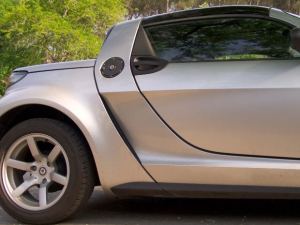According to experts at the World Bank and the World Resources Institute (WRI), many people are moving to cities. In fact, half of the world’s population now lives in urban areas, which means that these regions are expanding rapidly with new buildings and roads. It also means more traffic congestion, with cities creating 1.2 million traffic accident fatalities annually.
Many safety experts say that it does not have to be this way and that cities can become safe places with good, sustainable designs. The problem, some critics feel, is that current cities are not always designed for future population growth or even to handle the current population numbers, creating congestion and other problems.
Designers and engineers working to develop safer and more sustainable cities believe that there are a few basic things that could help make cities safer and greener:
1) Good transit systems.
Bus rapid transit (BRT) and other efficient mass transit systems reduce congestion and improve mobility. They also help people make better decisions to avoid drunk driving and give people the option of having a car-free lifestyle, which can help reduce emissions and traffic accident rates. Good mass transit is transportation that is safe, reliable, affordable, and convenient.
2) Pedestrian zones and better crosswalk areas.
To reduce congestion and encourage people to walk more, there need to be areas for pedestrians. This includes green spaces such as parks as well as safe pedestrian areas. Good urban design includes good sidewalks and safe crosswalks.
3) Smart streets.
Many designers and engineers are excited by the option of smart street design, which uses sensors, cameras, and other technology to allow infrastructure-to-car and car-to-car communication. Smart streets built of sustainable materials can warn motorists about traffic or pedestrians up ahead, so that they can brake in time. Smart roads can also weigh cars to make sure that overweight trucks are not on the roads and can melt away snow or evaporate water to reduce the risk of slick pavement. Smart signals can do away with traditional traffic lights by only signaling red lights when a car or pedestrian is approaching. These types of high-tech streets and lights could potentially help prevent congestion and collisions in the future while reducing fuel emissions by cutting down on idling.
4) Designs that provide safety for all road users.
A well-designed city is safe for everyone. This means that streets and sidewalks are safe and well-lit for pedestrians and provide a separate area for pedestrians. It also means that motorcyclists and bicyclists as well as heavy trucks and passenger cars can all enjoy good visibility and stay safe. This may mean separate lanes of traffic for commercial vehicles or separate bike lanes and areas for lighter vehicles.
One of the challenges that Florida currently has is that much of its infrastructure was built in the twentieth century, with car traffic very much in mind. As a result, Miami and surrounding suburbs tend to have plenty of roads but do not have sidewalks or bicycle lanes in all areas. Since Florida and Miami have a high rate of pedestrian and bicycle collisions, the state has made an effort to re-design areas in order to make them safer. However, it is an expensive and sometimes slow process.
Have you been injured due to poor road design in Miami or another city? Do you think your car accident may have been caused by negligence? If you have been injured, you can always contact Flaxman Law Group for a free and confidential case analysis. The legal team at our law firm can help you understand your rights and can explain what steps you can take next to protect yourself.
 Florida Car Accident Lawyer Blog
Florida Car Accident Lawyer Blog


